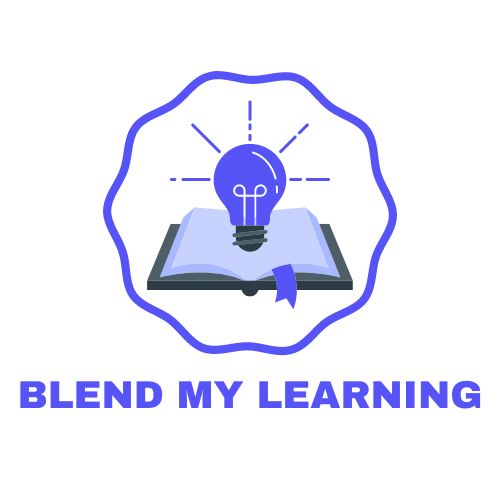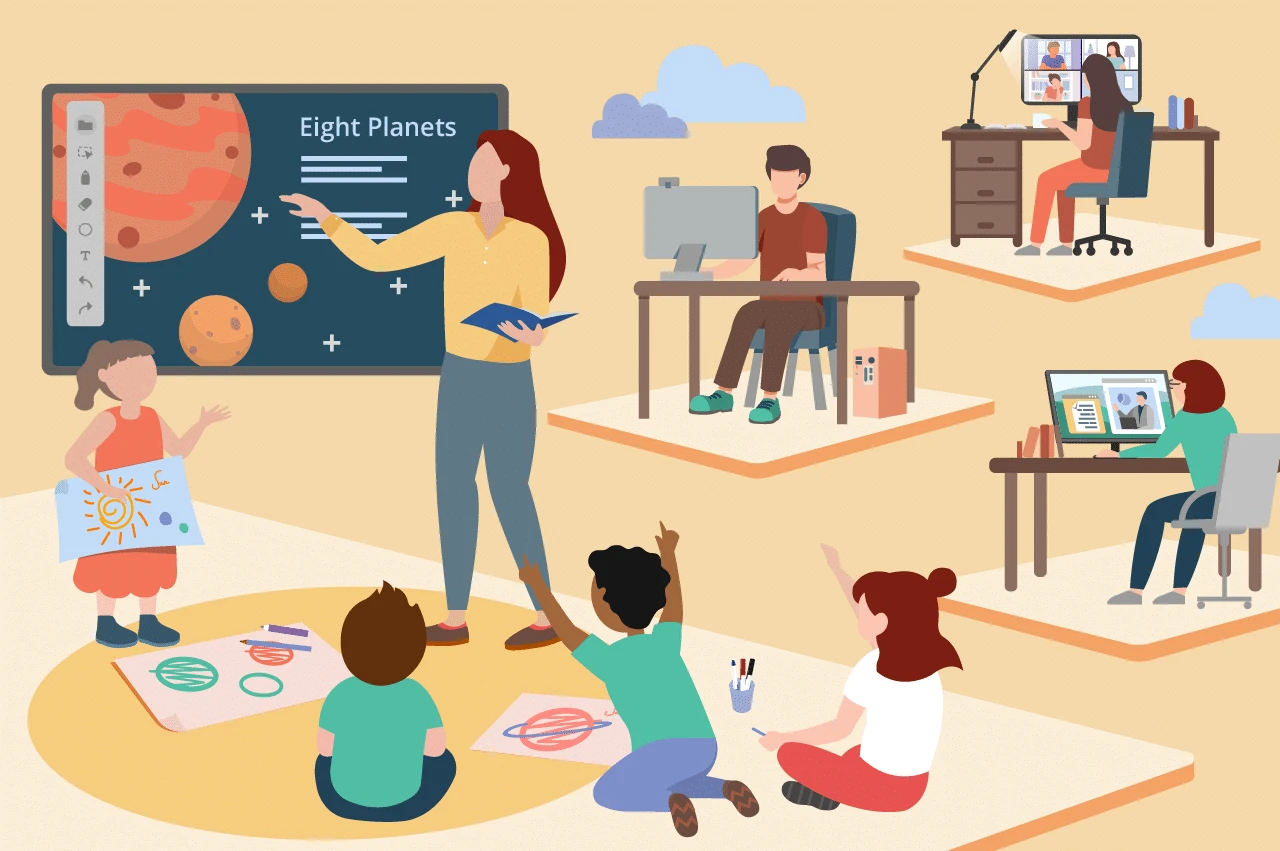Young people today face a world far different from the one their parents knew. Information is everywhere, but focus sometimes requires great effort. Educators seek the best path ahead for their students – How can they prepare these young minds for what’s to come, while respecting how each student learns uniquely?
More and more, teachers recognize that combining in-person lessons with online tools opens more doors for learning. In the classroom, students gain structure and collaborative problem-solving. At home or wherever curiosity strikes, online material lets them learn at their own pace.
This article is about the best methods of combining conventional and modern learning models.
Best Solutions for Integration
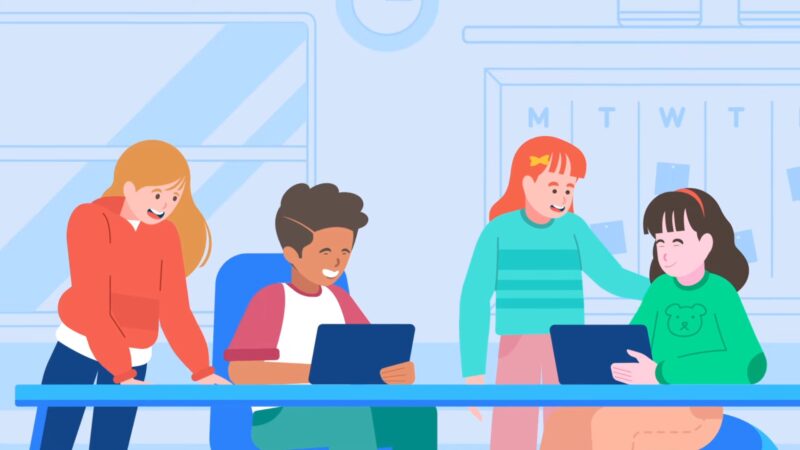
After implementing a blended learning model in my classroom this past year, here are some key takeaways that may help other educators:
- Clearly outline learning objectives for both online and in-person activities. Explicitly connecting the two helped students understand how different elements build upon each other.
- Play around with flexibility versus firmness of due dates for online work. An ideal balance holds students accountable while accommodating varying schedules.
- Ongoing professional development is crucial. Workshops on learning management systems aid initial adoption, while follow-up trainings address updates and faculty questions.
- Closely monitor student performance and engagement online. Catching assignments trailing off or grades slipping allows early interventions like check-ins or tutoring.
- Maintain open communication channels. Gathering regular feedback from students, parents, and administrators surfaces policy considerations or resource needs to strengthen support systems.
- Start small and scale up gradually. A test-run period refines strategies before full adoption to work out unforeseen elements.
- Evaluate successes and challenges continuously. Adjustments keep content, support structures, and instruction optimally serving evolving student populations.
Benefits Of Using Both Models Together
I am aware that there are still many teachers who prefer sticking to the old-fashioned style of teaching, which indeed has a lot of advantages. However, proper implementation of digital tools can significantly increase the results. Here are the main benefits:
- Flexibility – Students can learn on their own schedule, managing academics with other commitments.
- Diverse resources – Online platforms provide multimedia like videos and podcasts, while hands-on activities happen in class. Both feed learning styles.
- Personalization – Educators tailor lessons to each student’s needs, tracking progress to strengthen understanding.
- Cost-effectiveness – Online content reduces materials expenses. Schools stretch budgets with blended savings.
- Engagement – Interactive online content fuels curiosity outside class. In-person sessions cultivate connection through collaborative projects.
- Accessibility – Students anywhere can engage in high-quality instruction. No one misses out due to geographical barriers.
- Communication – Platforms facilitate ongoing feedback so students always have support systems.
- Future focus – Technology skills prepare youth for a digital workforce through research, collaboration, and problem-solving practice.
Challenges and Solutions
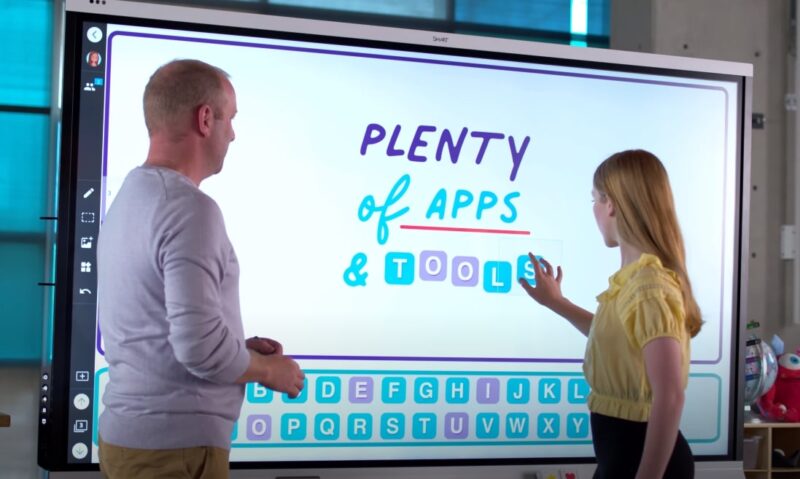
When implementing blended learning, there were hurdles to work through on my end. Access was huge – not all my students have devices and WiFi at home. Thankfully, our PTA stepped up to fund a checkout program for classroom sets.
Another challenge was the learning curve for me! Switching up my curriculum took time outside of class prepping engaging virtual activities. Sharing resources with fellow teachers through weekly collaboration sessions made this process much easier.
Keeping students focused online can be tough, too. I had to get creative with interactive videos and games to hold their attention span. Small group projects during in-person time fosters discussion.
Tracking progress across modalities also took adjustments. Learning management systems now make it simple to monitor assignments and flag struggling students for support.
With lessons sequenced to balance online flexibility with face-to-face guidance, I can better accommodate different learners. Ongoing assessment helps ensure this blended approach works for all.
While the transition wasn’t seamless, remaining solutions-focused got us acclimated. Providing access, support, and well-organized lessons means our students get the personalized education they deserve no matter the circumstances.
Strategies For Effective Implementation
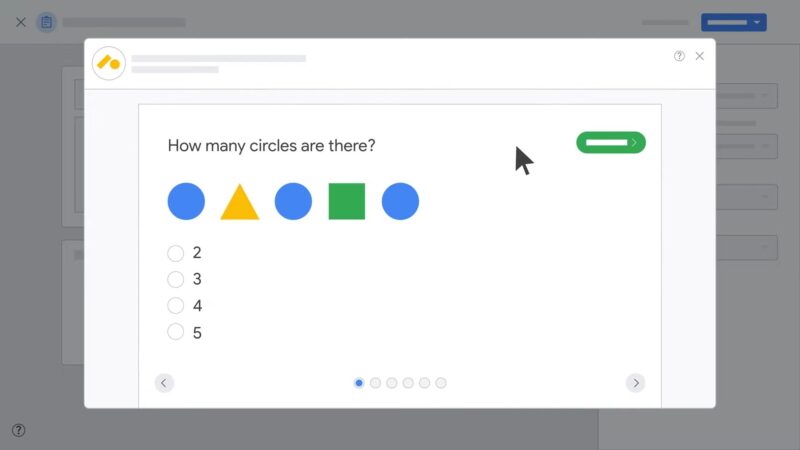
The first step is nailing down expectations – what do I want blending to accomplish for my students? With set goals in mind, tools like Google Classroom can bring lessons online smoothly.
Our blended launch required PD training so I was fluent assisting less tech-savvy colleagues. Practice made incorporating online activities second nature.
Finding engaging virtual content meant experimenting – instructional videos keep Remote Fridays lively, while interactive reviews gamify review games. Both enhance the absorption of in-person lessons.
With core concepts divided intentionally between modalities, my blended model creates a flow between independent study and guidance. Progress reports pinpoint where extra support is most impactful.
Discussion boards foster valuable peer-to-peer learning outside of four walls. In class, hands-on projects nurture collaboration and celebration of diverse backgrounds.
Access remains a priority through our campus lending program, ensuring full opportunity for academic success wherever students learn best.
Essential Tools and Resources
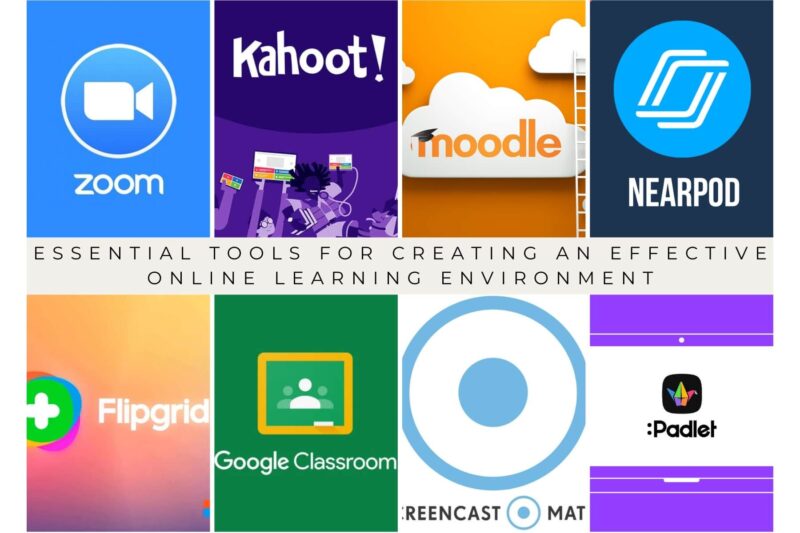
It’s crucial to integrate proper tools if you want to ensure a proper online learning environment. These are the platforms that will help you achieve that.
- Google Classroom – Streamlines assignment distribution and feedback through an interface students already use daily.
- Moodle – As a customizable LMS, it integrates all lessons into one hub for flexible access.
- Zoom – Especially valuable this year, remote conferencing keeps us connected through discussion-based activities.
- Kahoot! – Gamifying review sessions make content stick through friendly competition.
- Padlet – An awesome real-time brainstorming board outside of class hours.
- Nearpod – Enhances lectures with engagement tools like polls and quizzes to check comprehension.
- Screencast-O-Matic – Recording mini-lessons lets students review complex processes at their own pace.
- Flipgrid – Sparking multimedia discussions develops a variety of student voices and perspectives.
Best Practices for Student Engagement
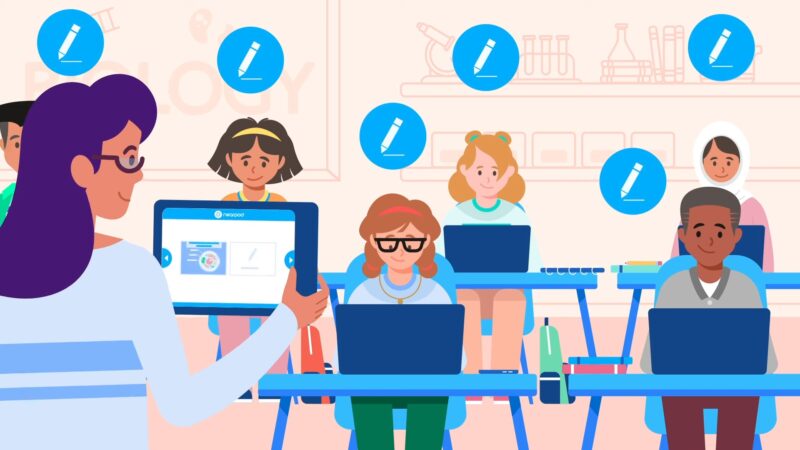
Student engagement is so important in any learning setting, but takes even more intention in blended models. Here are some strategies I’ve implemented:
- Tools like Nearpod make lessons more fun by adding interaction, pictures, and video. Also, I can see who’s paying attention.
- Working together on Google Docs lets students talk about the work outside of class and value all their ideas.
- Giving clear instructions up front stops confusion. Checklists break assignments into smaller pieces.
- Feedback on Classroom helps them do better and want to improve. Small group meetings also push accountability.
- YouTube and TedEd help explain ideas for those who learn from listening or watching. Variety keeps classes from getting boring.
- My set-up offers flexibility for remote work when needed, while still making sure there are hands-on experiments in person.
- Going over what we’ll learn focuses the work, while assignment choice builds initiative.
Last Words
Integrating online and traditional learning offers a powerful approach to education. It combines flexibility, engagement, and accessibility. Schools can use technology to enhance learning without losing the benefits of face-to-face interaction.
Successful implementation requires careful planning. Choose the right tools, train teachers, and create engaging content. Monitor progress and provide support as needed. Encourage collaboration and maintain regular communication.
Related Posts:
- Top 10 Online Learning Platforms for Blended Education
- Best Practices for Using Online Platforms in Blended…
- Maintaining Student Motivation in Synchronous and…
- Engaging Students in a Blended Learning Classroom: 7…
- Blended Learning vs. E-Learning - What is a Better Option
- Top Blended Learning Models for Effective Education…
